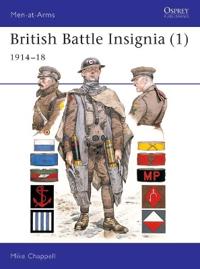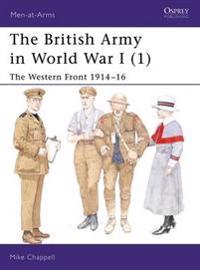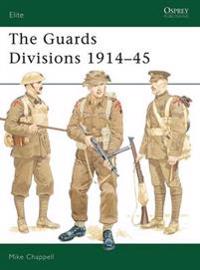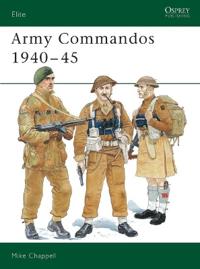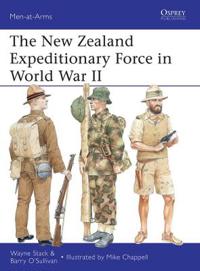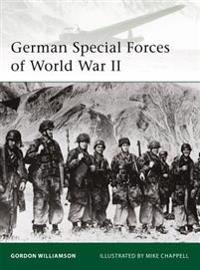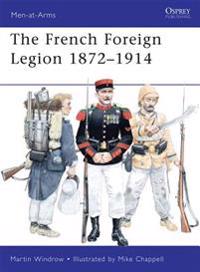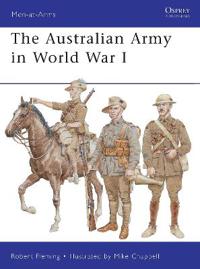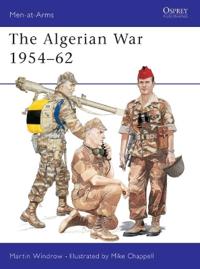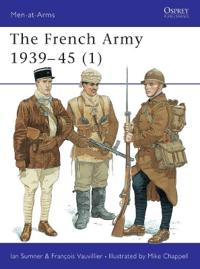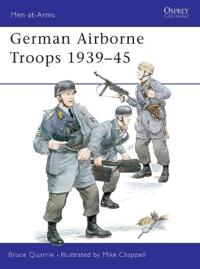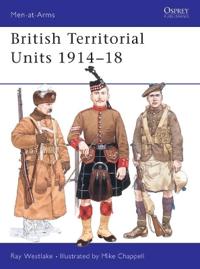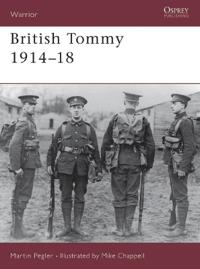British Battle Insignia (Pocket)
avMike Chappell, Mike (ILT) Chappell, Mike Chappell
ISBN: 9780850457278 - UTGIVEN: 1986-11The British soldiers who marched off to fight in World War I in 1914 wore only regimental insignia, yet by the time of the armistice in November 1918, insignia in the British Army had undergone a considerable change. Now visible was a bewildering display of coloured devices on uniforms, helmets, veh[...]
The British Army in World War I (Pocket)
avMike Chappell, Mike (ILT) Chappell, Mike Chappell
ISBN: 9781841763996 - UTGIVEN: 2003-10This book is the first of three concise but fact-packed titles on the British Army of the Great War. The units covered include the BEF, the Regular Army and the Royal Navy and Marine units operating on land. The text and the colourful and varied illustrations cover the organisation, uniforms, insign[...]
The British Army In World War I (Pocket)
avMike Chappell, Mike (ILT) Chappell, Mike Chappell
ISBN: 9781841764009 - UTGIVEN: 2004-12This volume covers the years of the "big pushes": the costly mistakes of the Somme in 1916, and Third Ypres - the infamous Passchendaele battle - in 1917. The author goes on to describe the successful defensive fighting against the great German offensive of spring 1918; and the Allies' final advance[...]
The British Army in World War I (Pocket)
avMike Chappell, Mike (ILT) Chappell, Mike Chappell
ISBN: 9781841764016 - UTGIVEN: 2005-05Although Britain's greatest commitment of land forces was on the Western Front during World War I (1914-1918), British, Empire and Dominion troops also fought in other theatres of operations - and in some cases continued to fight there after the Armistice had ended hostilities in the West. This last[...]
The Guards Divisions 1914-45 (Pocket)
avMike Chappell, Mike (ILT) Chappell, Mike Chappell
ISBN: 9781855325463 - UTGIVEN: 1995-11Osprey's examination of the British Guards during World War I (1914-1918) and World War II (1939-1945). The best example, and perhaps the only body of elite troops who have maintained their role as guardians of a royal household for over three centuries while building a reputation in war that is the[...]
Army Commandos 1940-1945 (Pocket)
avMike Chappell, Mike (ILT) Chappell, Mike Chappell
ISBN: 9781855325791 - UTGIVEN: 1996-11The period from early 1940 to the end of 1942 was a time of gloom and uncertainty for the British, who stood alone against the assembled might of the Axis powers. They badly needed a champion, and were to find this in a small force of soldiers who inspired them with a series of daring raids against [...]
The New Zealand Expeditionary Force in World War II (Pocket)
avWayne Stack, Barry O'Sullivan, Mike Chappell
ISBN: 9781780961118 - UTGIVEN: 201303In 1939 more than 140,000 New Zealanders enlisted to fight overseas during World War II. Of these, 104,000 served in the Second New Zealand Expeditionary Force. Initially thrown into the doomed campaign to halt the German blitzkrieg on Greece and Crete (1941), the division was rebuilt under the lead[...]
German Special Forces of World War II (Pocket)
avGordon Williamson, Mike Chappell, Gordon Williamson
ISBN: 9781846039201 - UTGIVEN: 200911This is a fascinating and long overdue study of the troops that made up Germany's elite special forces of World War II. Such forces included the legendary Skorzeny Commandos who carried out audacious tasks such as the glider-borne rescue of Mussolini, and the kidnapping of the son of the Hungarian r[...]
The French Foreign Legion 1872-1914 (Pocket)
avMartin Windrow, Mike Chappell, Martin Windrow
ISBN: 9781849083263 - UTGIVEN: 201007This volume covers the classic 'Beau Geste' period, of the French Foreign Legion when the corps was expanded during the most dynamic years of French imperial expansion. Legion battalions fought in the deserts and mountains of southern Algeria and Morocco, as well as in the jungles of North Vietnam, [...]
The Australian Army in World War I (Pocket)
avRobert Fleming, Mike Chappell, Robert Fleming
ISBN: 9781849086325 - UTGIVEN: 201206The importance of the Australian contribution to the Allied war effort during World War I should never be underestimated. Some 400,000 Australians volunteered for active duty, an astonishing 13 per cent of the entire (white) male population, a number so great that the Australian government was never[...]
The Algerian War, 1954-62 (Häftad)
avMartin Windrow, Mike Chappell
ISBN: 9781855326583 - UTGIVEN: 1997-11In the mid-1950s to early 1960s the Algerian war dominated the European press, comparable in impact to the Vietnam War. France was divided politically, and governments rose and fell regularly. Algeria was France's oldest, richest and most integrated colony, but during the war in Indochina an undergr[...]
The French Army, 1939-45 (Häftad)
avIan Sumner, Francois Vauvillier, Mike Chappell
ISBN: 9781855326668 - UTGIVEN: 199804On paper at least the French army in 1939 was the most powerful land army in the world. Sheltered behind the fortifications of the Maginot line was an army which drew its troops from colonies and territories all over the world. It included spahis from algeria, calvary from Morocco, Chasseur Alpin fr[...]
German Airborne Troops, 1939-45 (Pocket)
avBruce Quarrie, Mike (ILT) Chappell, Bruce Quarrie
ISBN: 9780850454802 - UTGIVEN: 1983-06Airborne operations have often been called a vertical envelopment, and therein lies one of the best descriptions of their value. The essence of an envelopment is to pin the enemy in place so that it can be destroyed. A strong enemy force to one's rear disrupts supplies and communications and makes o[...]
British Territorial Units 1914-18 (Pocket)
avRay Westlake, Mike (ILT) Chappell, Ray Westlake
ISBN: 9781855321687 - UTGIVEN: 1992-03In his Army Reforms of 1906/07 the Secretary of State for War, Richard Burdon Haldane, provided for an expeditionary force - the Regular Army supplemented by the old Militia - and a new organisation intended for home defence, the Territorial Force. This new 'Citizen's Army' was formed by the transfe[...]
British Tommy (Pocket)
avMartin Pegler, Mike (ILT) Chappell, Martin Pegler
ISBN: 9781855325418 - UTGIVEN: 1996-05World War I (1914-1918) was a watershed in British military and social history, and even now the repercussions can still be felt. No town or village in the British Isles escaped casualty, and the creative genius of a generation was wiped out, at an incalculable loss to society. This book looks in de[...]

